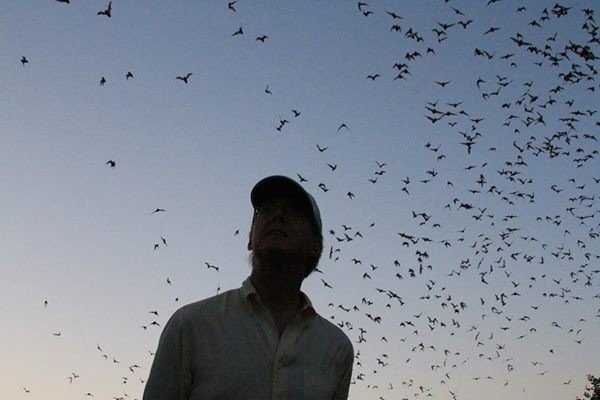 BCI has enjoyed widespread success in enlightening the understanding of the world’s bats. But what they need to make the next leap, said Executive Director Andrew Walker, are the sort of tools that will enable them to focus their conservation efforts.
BCI has enjoyed widespread success in enlightening the understanding of the world’s bats. But what they need to make the next leap, said Executive Director Andrew Walker, are the sort of tools that will enable them to focus their conservation efforts.
That’s where NatureServe comes in.
“One of the top priorities for us is the fact that we’re going to work with NatureServe to create the world’s first global bat database,” Walker told us in a recent interview. “This database will drive bat conservation for decades to come.”
Q: What do you expect BCI to accomplish by tapping into NatureServe’s data network?
A: Number One on that list is to prevent extinction, and really enhance understanding—through the collection of this data—of what the long-term population trends are for a species.
Number Two is protection of bat mega-populations—those species that congregate by the millions. By working with NatureServe, BCI can make sure we have a place to gather population-trend data over the long term and spot significant changes, up or down.
And then Number Three, which will emerge over time, is identifying areas of the highest bat diversity. For example, are there 30,000-acre places where 100 species of bats are all living, that deserve protection as significant bat areas? A big part of the NatureServe system is the ability to access far more data. That will allow BCI to set objective priorities and, at the same time, become a funnel for collecting information from around the world via new field surveys, as well as data that may be sitting in a thousand laptops of a thousand scientists around the world, that will never see the light of day if we don’t create something like this.
Q: When you talk to regular people, what are they most surprised when they learn about bats?
A: There are two things. One is that there are so many species. Nearly one-fourth of all mammals are bats. We’re up to 1,331 species and we certainly know there are others that have yet to be described. The other is that they’re as intelligent as they are. People either love bats or hate them—few people are in the middle. I think the people who love them came to appreciate just how much personality it is that they have. But you have to get close to them to get a sense of that.
Q: Not to force you to play favorites, but if you had to pick, are there any bats that you’re particularly fond of?
A: They are just all so cool, so different. If I had to choose, I’d say my two favorites in the U.S. are the hoary bat, because of its personality, and the evening bat, which is about the size of your thumb. The hoary bat is just so feisty. It doesn’t like being caught, and it’s pleased to tell you so. Most bats, once they realize that you’re not going to eat them, they sort of calm down—they’ll even hang off your fingers until they decide to fly away. But the hoary bat just complains the whole time. And then the evening bat, it has this beautiful thick coat, and they can hibernate at 30 degrees below zero on the side of a tree. It’s quite a unique species.
Q: Do is it feel like the negative side of bats’ image is changing at all?
A: I think it is changing—in this country, certainly. But there are many parts of the world, such as India, where bats are officially described as vermin and can be killed on sight. And there are many places where the ecosystem services bats provide are very underappreciated and misunderstood. And there’s also, even in this country, an exaggeration of bats and disease. We are continually having to go around and correct the record on things like that.
Q: And the same applies to how useful bats are in terms of the things they do to sustain human society?
A: An article in Science a few years ago estimated that bats’ contribution to U.S. agriculture—in terms of reduced crop damage and lower pesticide use—averages about $23 billion a year. And that’s just in the U.S. The one silver lining to white-nose syndrome, which has killed millions of bats in the eastern half of the country and Canada, has been that it has woken people up to what it is bats do and how important it is not to lose them.
Q: Let’s fast-forward a few years: Data sharing is in full swing and you’ve launched various initiatives linked to your global bat database. How has BCI grown by then?
A: I’d like to see us with long-term conservation programs on the ground five years from now in at least 10 countries. And we would also be filling the database with a steady flow of new information. I see us having a significant presence in the Pacific and southeast Asia, central and western Africa, and Mexico—and I think that would all be due to what data we’ve been able to either put into the NatureServe system or glean from what’s already there today.